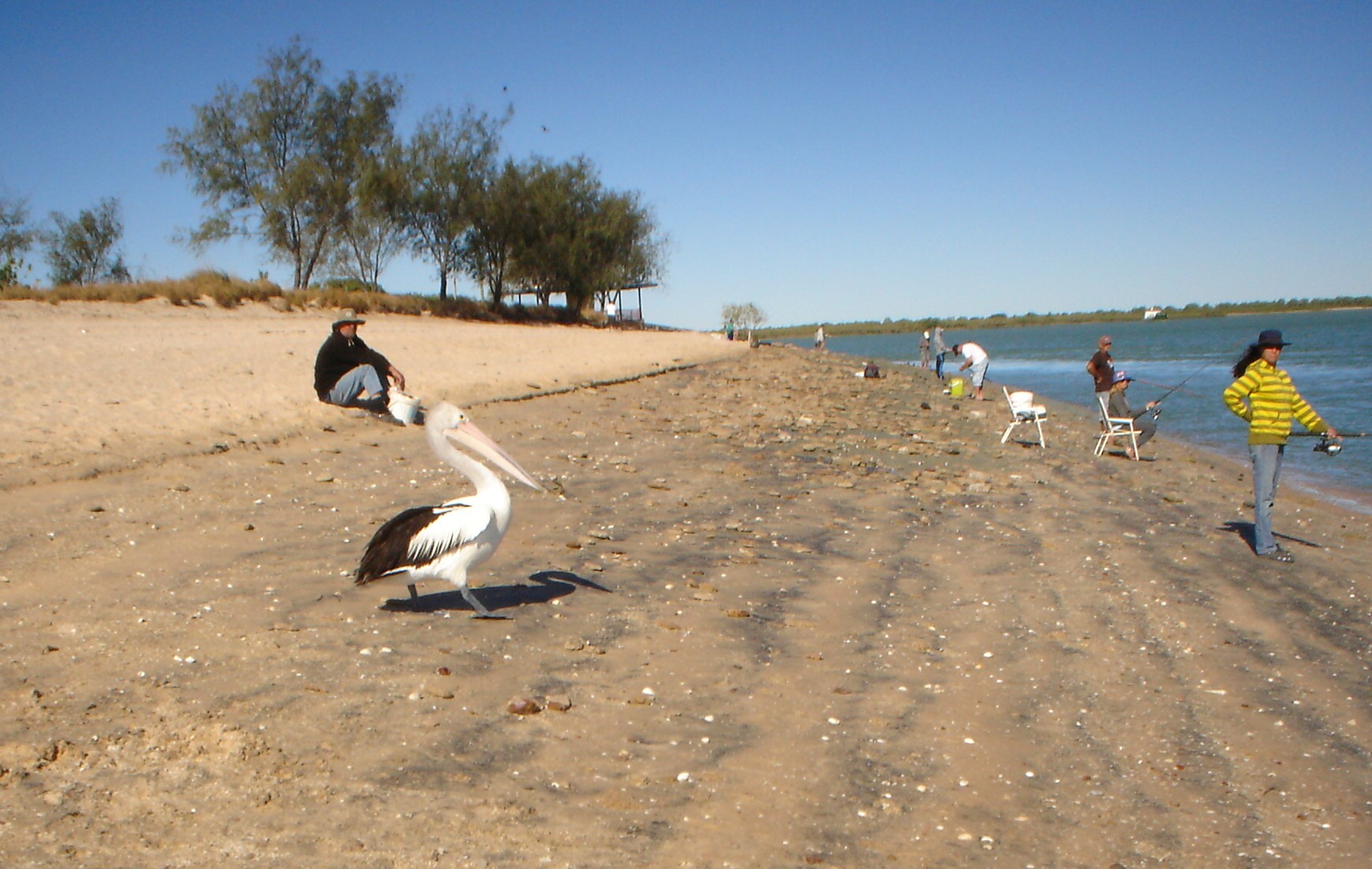Karumba is often touted as the grunter capital of the world by
lure, fly and bait fishers alike. Grunter fishing is great for those who
like the idea of soaking squid, and if it is barra you crave then Karumba
also has plenty in store for you.
Lure fishing for barra on a secluded beach is what all fishers can
daydream over. The thought of sand between your toes and barramundi jumping
all over the ocean is appealing to all. Catching fish from a beach where
there is little chance of being busted-up in snags, allows for a nice clean
battle – completely enjoyable.
The most obviously starting point is at that the beach – but not
just any beach. Barra around Karumba love hanging around the mouths of
rivers and creeks looking for action and a bite to eat.
For successful barra fishing on the beach there must be a steady food supply in shallow water. Most of the thriving beach spots in and around Karumba are on the rising tide when the food is channelled into the main river along a beach gutter. The gutters don’t need to be deep, as mullet and whiting only need centimetres of water to move on the incoming tide. It is important that the end of the gutter has an area from where the predators can ambush. There are no snags or rocks so the only camouflage for a predator barra must come from discoloured water or a deep edge.
WHERE TO START
For successful barra fishing on the beach there must be a steady food supply in shallow water. Most of the thriving beach spots in and around Karumba are on the rising tide when the food is channelled into the main river along a beach gutter. The gutters don’t need to be deep, as mullet and whiting only need centimetres of water to move on the incoming tide. It is important that the end of the gutter has an area from where the predators can ambush. There are no snags or rocks so the only camouflage for a predator barra must come from discoloured water or a deep edge.

HOW TO GO ABOUT IT
The sand bar will produce on the run-out tide if there is a deeper section left on the bottom. This leave’s nowhere for the bait to congregate as the tide drops away.
As the tide rises and the water starts to trickle in and around the point of the beach, it’s time to start casting. Begin by working the deeper edge first as the barra will know that the tide is rising. At times there might only be the slightest run and not looking appealing to the angler, but the fish will know and hole-up 20-30m off the drop. A deep diving lure or a jig like a Prawnstar is a valuable tool and allows for some bottom research as the tide begins to flow.

As the tide begins to push harder around the point of the beach then the fish will move up right onto the edge of the channel, especially if it is dirty water. Barra will sit right on the edge and await their rewards for such bravery. Mullet, whiting and prawns drift along the shallow channel on the migration up the beach without the knowledge that a deeper edge is just in front of them.
Once there is enough water to comfortably and safely cruise into the shallow gutter the barra and salmon move in. If the tide is fairly strong then sometimes a pressure wave presents itself as the two tidal forces meet. This discolours the water and is a favourite place for the predators as eddies are created giving them a free parking space with little current and disorientating the poor old food item.
TACKLE
Prawnstars are unbeatable at the start of the tide in a deep hole and along the edge. Even with the tide higher they work as they bounce along the bottom. The Prawnstars do extremely well as prawns are a major dietary intake for the estuary predators as they migrate up and down the beach.

Fly selection is simple – pink thing first, middle and last. At the beginning of the day tie one on and you will catch fish. There is probably other fly patterns that will work equally as well but I can’t tell you what they are as the old pinkie has never let me down – never change a winning formula.

OTHER SPECIES

WHEN TO GO
Smaller tides are the go at any time. However, as the weather cools at the end of April and into early May the bigger tides seem to keep the barra clan in the mood. The smaller tides early in the year are still pretty big and it is a major consideration before attacking the beach. The bigger tides can still be fished by anchoring the boat in the beach gutter and fishing back into the pressure wave but this certainly doesn’t get the sand between you toes.



No comments:
Post a Comment